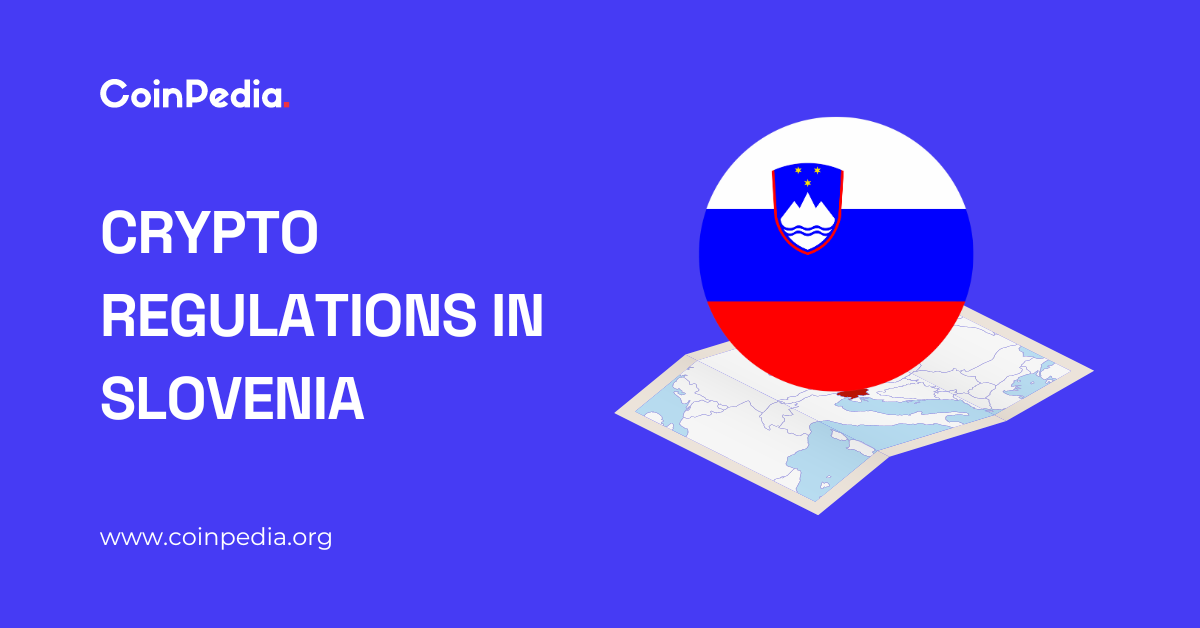Regulation
Brickken CEO Edwin Mata tackles firm’s selection for European Commission’s blockchain, DLT regulatory sandbox

This month, Barcelona-based tech startup Brickken announced its selection to participate in the European Commission’s (EC) European Blockchain and Distributed Ledger Technologies (DLT) Regulatory Sandbox.
The sandbox aims to accelerate the development of blockchain technologies and platforms by putting startups and regulators in pan-European countries in direct contact, to test new products and services in real-life environments.
In its June 13 press release, Brickken stated that its inclusion in the sandbox represented “another milestone in its mission to revolutionize the tokenization industry” and “another step towards the adoption of blockchain by institutional clients, banks, and capital markets.”
CoinGeek caught up with Brickken CEO Edwin Mata to discuss the company, its involvement in the sandbox and what it hopes to achieve in the coming year.
About Brickken
“We are a tokenization platform, what we do is allow companies of any size in any country to be able to tokenize their assets, that is digitize whatever they want, such as real estate, equity, debt,” explains Mata. “We’re in the field of just providing the solution for companies to be able to tokenize themselves.”
Co-founded in Barcelona in 2020 by Mata, Yassir Haouati, Bram Duindam and Dario Lo Buglio, the company’s stated mission is to “empower businesses and individuals to tokenize assets, democratizing investments and revolutionizing asset management,” and its vision is to “create a global ecosystem for accessible digital asset ownership, transforming finance through innovation, transparency, and growth.”
Brickken provides technological support for anyone looking to enter the market without the need to develop their technology, as they can rely on Brickken’s infrastructure, which offers a “frictionless entry.”
Since its 2020 inception, it is now active in over 14 countries. The company has tokenized more than US$200 million in assets and boasts over 50 clients. According to Mata, there has been a recent boom in interest recently.
“Starting November, we saw an uptick because institutional players started talking about tokenization. We had BlackRock (NASDAQ: BLK), we had a tokenized bonds, and various other players entered the field. So that allowed us to really enter the market, because we were already here with a great product and we understand the wave.”
This was reflected in a busy couple of months for the company, which saw it announce in May its selection to participate in PricewaterhouseCoopers’s (PwC) Scale program. Scale aims to assist tokenization and digital asset companies “scale up,” through a rigorous 12-week curriculum that includes masterclasses and personalized mentorship from subject matter experts.
Now Brickken heads into the EC sandbox, and Mata hopes it will usher in further growth.
“We want to test this bond structure. We want to go to the next level – can institutional players use blockchain for funded structuring?”
He goes on to explain that the sandbox is not just about testing products and growing the company; it’s also about increasing cooperation with regulators.
“In a perfect world, I believe we can benefit [from] the connection between the regulator and the private company,” says Mata. “In this sandbox, we’ve got 20 different companies with different 20 different use case, and it’s all about explaining to the regulator what we’re doing day to day… to explore technology and legality with the regulators and also receive feedback.”
This is one of the main goals of the EC’s sandbox, increased transparency and communication between regulator and company.
The regulatory sandbox
The EC, part of the European Union’s executive branch, announced the blockchain regulatory sandbox in 2020 to provide an environment for testing use cases for blockchain tech and digital assets as part of the European Blockchain Services Infrastructure (EBSI).
The aim was to provide legal certainty through facilitating regulatory dialogue and cooperation between innovators and regulators at the national and the EU level.
“DLT [distributed ledger technology] use cases participating in the Sandbox have the opportunity to demonstrate their innovative solutions and highlight their needs regarding regulatory guidance and legal certainty to regulators and supervisors in a safe and confidential environment,” said the EC at the time.
Participants in the sandbox would receive legal advice and be able to develop their regulatory understanding and extend their network and reputation through their participation.
The EC explained that the dialogues would be held “across industry sectors and geographic regions, which will help to identify and communicate best practices in the interest of the wider EU/EEA blockchain community. The sandbox is open to use cases based on any blockchain infrastructure.”
In terms of benefits to regulators and authorities, they would be able to discuss regulatory issues that have arisen on a national level in a cross-border setting with other EU and national regulators making use of the pan-European Sandbox framework that is established for this project. Regulators have the chance to support applications of use-cases for the sandbox that they find particularly relevant for a regulatory dialogue.
The sandbox was set up to host 20 blockchain startups annually, running until 2026. Companies (including start-ups and scale-ups), non-profit organizations and public bodies with a validated proof of concept can apply, with applicants vetted and selected by a team of academic experts from European universities. The EC then matches these companies with the relevant national and European regulators for a “constructive dialogue on the most relevant regulatory issues.”
As the EC put it: “The European Blockchain Sandbox has been set up and is being operated to facilitate the dialogue between regulators and innovators for private and public sector use cases. Legal advice and regulatory guidance will be provided in a safe and confidential environment.”
The sandbox was eventually launched in February 2023, and a few months later, in July, the first cohort of 20 projects were revealed.
The selected projects received regulatory and compliance guidance from a cross-section of European Union regulators based on their industries. The projects cut across several sectors, with transportation, culture, food, education, manufacturing, finance and telecommunications making the bulk of use cases.
Mata explains that the first set of cohorts were, more or less, just dipping their toes into the blockchain space, exploring, for example “a public ledger where you can like really see the transactions and put everything on the ledger.”
By comparison, he argues that this year’s selected 20—which was announced by the EC this month and included Brickken—demonstrates a greater diversity of companies exploring what blockchain can do, and working in areas that serve to greater amplify the potential of blockchain technology.
As well as Brickken—working in the trending area of tokenization of real-world assets—Mata gives the examples of fellow cohorts Hacken, which focuses on smart contract and blockchain security analysis, and DigiShares, which is “trying to get a tokenized real estate secondary market.”
Despite the diversity of projects, there is something all the various cohorts of the EC sandbox share.
“We’re representing the industry. I don’t know how many companies applied, but it’s important for the 20 companies on board to really show transparency to the regulator and tell them ‘we’re doing this in your field, how is going to be treated?’ Because others will come, it’s not like we’ve just inventing some weird sci-fi thing, we’re already in the market,” says Mata.
He goes on to suggest that the sandbox is “the perfect opportunity for the regulator to acknowledge the fact that this is here. It’s not just, ‘oh yeah, I’m going to test this thing now,‘ we’re already making a business out of tokenizing real-world assets, and they have to acknowledge that.”
For Brickken, this is a primary and crucial goal of the sandbox.
MiCA and regulatory uncertainty
The reason increased dialogue, clarity and acknowledgement between regulators and blockchain companies may be necessary, is certain impending regulation in the EU.
Namely, the European Union’s landmark Markets in Crypto Asset regulation (MiCAR), also called MiCA, which passed its final vote in the EU parliament in April 2023 and is gradually coming into force this year.
MiCAR brings digital assets, issuers, and service providers under a broad regulatory framework. Digital asset service providers, such as exchanges and wallet providers, must obtain a license from national regulators to offer services to EU citizens. Along with license mandates, MiCAR will provide new classifications for different digital assets, rules specific to those assets, proof-of-funds requirements for stablecoin issuers, and the requirement for any company seeking to issue digital assets/coins to publish a white paper containing information about the project, including possible risks.
The regulation became law on June 30, 2023, and the new framework will start to apply in two phases: the part of MiCA regulation containing specific rules applicable to stablecoins will start to apply as of June 30, 2024, and rules applicable to digital asset service providers will start to apply as of December 30, 2024.
“Unfortunately, right now, it’s a very messy situation because at the end of June, certain parts of MiCAR come into force, and the second part in December. The first part is around stablecoin, or asset-backed tokens, and we don’t even know which stablecoins and asset-backed are going to require a license,” says Mata.
MiCAR does explain quite clearly which types of assets will fall within its remit and what issuers and custodians of those assets need to be compliant. However, the confusion arises because, despite the looming end-of-June implementation date, it’s not clear if some of the major stablecoins are going to comply with the rules, and therefore, whether EU companies and investors will be able to use them.
“The most tradable asset-backed tokens right now are UST and USDC, and we don’t know if we’re going to be able to use those in Europe,” explains Mata.
UST, or Tether, is the most widely used stablecoin on the market, and USDC, issued by U.S. company Circle, is a close second. Both have signaled their displeasure with MiCAR’s stablecoin rules.
In February, a paper published by Circle criticized the EU approach as flawed, saying it would only push issuers away, while Tether’s CEO Paolo Ardoino stated in an April interview the company’s unwillingness to secure permission to operate under the MiCAR framework.
Despite complaints, Circle has applied for an EU electronic money license (EMI) and is currently awaiting the result. Its CEO, Jeremy Allair, also said that its goal is to bring its products and services into full compliance with the impending MiCA rules. It remains unclear whether the regulation shy Tether will follow suit.
“Just the fact that we don’t even know what we can trade, is going to be reducing the amplitude of what we’re doing on a day-to-day,” says Mata. “The fact that there’s so much uncertainty is definitely going to have a huge impact on the industry. It’s always a concern about legality, but also about innovation. There are countries that are not going to be able to access the top-notch technology, just because they feel like the regulation is overboard. It’s fine, you’ve got to protect the customer, but at the end, you cannot start blocking innovation.”
Arguably, this is where the EC’s regulatory sandbox can come into its own, allowing a space free of regulatory uncertainty for companies to innovate in cooperation and dialogue with regulators.
Brickken’s hopes for the sandbox
“The outcome of all of this has to be best practices. The regulator issued a booklet for best practices recently on last year’s companies, they understood what they were doing, and they flagged issues,” says Mata.
The best practices booklet he refers to is the EC’s best practices report, which examines the progress the sandbox and suggests “best practices” based on observations, feedback and dialogue between participants and regulators.
Part A of the report was published in February and covered the early stages of setting up the sandbox, the first applications phase, the selection of the first cohort, outreach to regulators and the beginning of the first set of dialogues. Part B will likely drop before the end of the summer and will cover the best practices and lessons learned in relation to the first round of regulatory dialogues.
The best practices and observations to come out of the early phases of the sandbox, with the first set of cohorts, included that the setup of the sandbox and application website worked well; there was “great interest from innovators”; and for use cases which incur a range of different regulatory topics, a more in-depth dialogue with specific regulators and authorities appeared to work better.
The EC’s full observations on the dialogue between participant companies and regulators won’t be known until Part B of the report is published, but such productive collaboration on best practices is what Mata and Brickken seek.
“We want to provide information for the regulator, and on everything that happens, but it’s also a challenge for us because we are so deep into the innovation field that we forget or neglect the fact that it’s highly regulated,” says Mata. “We comply with absolutely everything, but this is also our testing phase. We want to put the challenge, to break in and say, we know the game, we have been working at this for years, we have inhouse and external lawyers, we have consultants, we have all of this to leverage the fact that we are compliant.”
Spreading awareness is key for Mata, to regulators but also to the market at large:
“It’s always about how we can spread more awareness, and this has been one of the key priorities of Brickken because we’re always out there publishing, doing interviews, mass media, going to events on blockchain. We’ve already been to six events this year, and we have about 12 more before the end of the year, which is ridiculous!”
One such event was the London Blockchain Conference 2024 (LDNBlockchain24), which took place from May 21 – 23, and at which Mata spoke.
Brickken at the London Blockchain Conference
The annual London Blockchain Conference brought together businesses, academics, developers, innovators, commentors, and blockchain enthusiasts to discuss, learn, and connect on all things blockchain, Web3, artificial intelligence (AI) and regulation.
Mata was part of a panel on tokenizing real-world assets, during which spoke about a move from stablecoins to tokenized treasury bills and financial instruments—something he said was a move along the risk curve.
He also assured attendees of the conference that that regulations will still apply to tokenized assets, reducing the risk of market crash. Tokenization, he explained, is a new way of doing things, but it doesn’t fundamentally change the rules.
In terms of his experience of the London Blockchain Conference 2024 and reasons for attending, Mata says:
“We started in 2020, we have always been educators. So as a business, we still have to create that market, and that’s the biggest challenge. We want to do these kinds of events, where we always find partners, clients, and then on the back of it we try to spread, “the gospel” that blockchain has a lot of different functionalities.”
Mata recalls that his specific panel discussion on tokenization was, “one of the most approached panels… so I would say we had an impact.”
“That impact matters, but it’s also about how we can echo that. I mean, the immediate impact can be that maybe 100 people listened to you. You will then leverage that and amplify it to thousands. We always do that when we attend a conference, for example, on our socials, to spread the word.”
This is the common thread through both Brickken’s participation in the EC regulatory sandbox and attending events such as London Blockchain Conference—to spread the word about the technology and increase transparency, whether that’s with investors or regulators.
Outside of increased dialogue, from a more practical standpoint, through its inclusion in the EC regulatory sandbox Brickken will be able to develop and optimize its solutions within a secure environment, potentially boosting its acceptance among institutional clients, market operators, and bond issuers, as well as facilitating its entry into new markets.
Ultimately, the company aims to become a strategic ally for various capital market players, maximizing their operational efficiency and “fostering technological synergy” in digital asset management.
A goal that Mata believes is closer to reality thanks to the company’s inclusion in the EC sandbox.
“I’m optimistic to find out how much Brickken can grow, through getting ourselves into transparency with the regulator – the issuer of the regulations we’ve been working with,” says Mata.
“Transparency in blockchain matters, so I think it’s a great way to showcase if we can continue in the same way. Are we going to be accepted? Can we keep innovating? Can we keep supplying to the market? It’s a learning curve, even for us.”
Watch BSV DevCon 2024 highlights: Building real-world solutions for real-world problems
width=”560″ height=”315″ frameborder=”0″ allowfullscreen=”allowfullscreen”>
New to blockchain? Check out CoinGeek’s Blockchain for Beginners section, the ultimate resource guide to learn more about blockchain technology.
Regulation
Cryptocurrency Regulation in Slovenia 2024

Slovenia, a small but highly developed European country with a population of 2.1 million, boasts a rich industrial history that has contributed significantly to its robust economy. As the most economically developed Slavic nation, Slovenia has grown steadily since adopting the euro in 2007. Its openness to innovation has been a key factor in its success in the industrial sector, making it a favorite destination for cryptocurrency enthusiasts. Many believe that Slovenia is poised to become a powerful fintech hub in Europe. But does its current cryptocurrency regulatory framework support such aspirations?
Let’s explore Slovenia’s cryptocurrency regulations and see if they can push the country to the forefront of the cryptocurrency scene. My expectations are positive. What are yours? Before we answer, let’s dig deeper.
1. Cryptocurrency Regulation in Slovenia: An Overview
Slovenia is known for its pro-innovation stance, providing a supportive environment for emerging technologies such as blockchain and cryptocurrencies. Under the Payment Services and Systems Act, cryptocurrencies are classified as virtual assets rather than financial or monetary instruments.
Regulation of the cryptocurrency sector in Slovenia is decentralized. Different authorities manage different aspects of the ecosystem. For example, the Bank of Slovenia and the Securities Market Agency supervise cryptocurrency transactions to ensure compliance with financial laws, including anti-money laundering (AML) and counter-terrorist financing regulations. The Slovenian Act on the Prevention of Money Laundering and Terrorist Financing (ZPPDFT-2) incorporates the EU’s Fifth Anti-Money Laundering Directive (5MLD) and aligns with the latest FATF recommendations. All virtual currency service providers must register with the Office of the Republic of Slovenia.
2. Cryptocurrency regulation in Slovenia: what’s new?
This year, there have been several noteworthy developments in the cryptocurrency sector in Slovenia:
July 25, 2024: Slovenia has issued a €30 million on-chain sovereign digital bond, the first of its kind in the EU, with a yield of 3.65%, maturing on 25 November 2024.
May 14, 2024: NiceHash has announced the first Slovenian Bitcoin-focused conference, NiceHashX, scheduled for November 8-9 in Maribor.
3. Explanation of the legal framework for cryptocurrency taxation in Slovenia
Slovenia’s cryptocurrency tax framework provides clear guidelines for both individuals and businesses. According to the Slovenian Tax Administration, tax treatment depends on the status of the trader and the nature of the transaction.
- Individuals: Income earned from cryptocurrencies through employment or ongoing business activities is subject to personal income tax. However, capital gains from trading or market fluctuations are exempt from taxation.
- Society: Capital gains from cryptocurrency activities are subject to a corporate income tax of 19%. Value added tax (VAT) generally applies at a rate of 22%, although cryptocurrency transactions considered as means of payment are exempt from VAT. Companies are not allowed to limit payment methods to cryptocurrencies only. Tokens issued during ICOs must comply with standard accounting rules and the Corporate Tax Act.
4. Cryptocurrency Mining in Slovenia: What You Should Know
Cryptocurrency mining is not restricted in Slovenia, but the income from mining is considered business income and is therefore taxable. This includes rewards from validating transactions and any additional income from mining operations. Both natural persons and legal entities must comply with Slovenian tax regulations.
5. Timeline of the evolution of cryptocurrency regulations in Slovenia
Here is a timeline highlighting the evolution of cryptocurrency regulations in Slovenia:
- 2013:The Slovenian Tax Administration has issued guidelines according to which income from cryptocurrency transactions should be taxed.
- 2017:The Slovenian Tax Administration has provided more detailed guidelines on cryptocurrency taxation, based on factors such as the trader’s status and the type of transaction.
- 2023The EU has adopted the Markets in Cryptocurrencies Regulation (MiCA), which establishes a uniform regulatory framework for cryptocurrencies, their issuers and service providers across the EU.
Final note
Slovenia’s approach to the cryptocurrency industry is commendable, reflecting its optimistic view of the future of cryptocurrency. The country’s balanced regulatory framework supports cryptocurrency innovation while protecting user rights and preventing illegal activities. Recent developments demonstrate Slovenia’s commitment to continuously improving its regulatory environment. Slovenia’s cryptocurrency regulatory framework sets a positive example for other nations navigating the evolving cryptocurrency landscape.
Read also: Cryptocurrency Regulation in Hong Kong 2024
Regulation
A Blank Slate for Cryptocurrencies: Kamala Harris’ Regulatory Opportunity

Photo by The Dhage of Shubham ON Disinfect
As the cryptocurrency landscape continues to evolve, the need for clear regulation has never been greater.
Vice President Kamala Harris is now leading the charge on digital asset regulation in the United States, presenting a unique opportunity for a clean slate. This fresh start can foster innovation and protect consumers. It can also pave the way for widespread adoption across industries, including real estate agencies, healthcare providers, and online gambling platforms like these online casinos in the uk. According to experts at SafestCasinoSites, these platforms have advantages such as bonus offers, a wide selection of games, and various payment methods. Ultimately, all this increased adoption could push the cryptocurrency market forward.
With that in mind, let’s take a look at the current state of cryptocurrency regulation in the United States, which is a complex and confusing landscape. Multiple agencies, including the Securities and Exchange Commission (SEC), the Commodity Futures Trading Commission (CFTC), and the Financial Crimes Enforcement Network (FinCEN), have overlapping jurisdictions, creating a fragmented regulatory environment. This lack of clarity has hindered innovation, as companies are reluctant to invest in the United States, fearing regulatory repercussions. A cohesive and clear regulatory framework is urgently needed to unlock the full potential of cryptocurrencies in the United States.
While the US struggles to find its footing, other countries, such as Singapore and the UK, are actively embracing the cryptocurrency industry with clear and supportive regulatory frameworks. This has led to a brain drain, with companies opting to set up in more hospitable environments.
Vice President Kamala Harris has a unique opportunity to change this narrative and clean up the future. cryptocurrency regulation. By taking a comprehensive and inclusive approach, it can help create a framework that balances consumer protection with innovation and growth. The time has come for clear and effective regulation of cryptocurrencies in the United States.
Effective regulation of digital assets is essential to fostering a safe and innovative environment. Key principles guiding this regulation include clarity, innovation, global cooperation, consumer protection, and flexibility. Clear definitions and guidelines eliminate ambiguity, while encouraging experimentation and development to ensure progress. Collaboration with international partners establishes consistent standards, preventing regulatory arbitrage. Strong safeguards protect consumers from fraud and market abuse, and adaptability allows for evolution in response to emerging trends and technologies, striking a balance between innovation and protection.
The benefits of effective cryptocurrency regulation are many and far-reaching. By establishing clear guidelines, governments can attract investors and traditional users, spurring growth and adoption. This, in turn, can position countries like the United States as global leaders in financial technology and innovation. Strong protections will also increase consumer confidence in digital assets and related products, boosting economic activity.
A thriving cryptocurrency industry can significantly contribute to GDP and job creation, which has a positive impact on the overall economy. Furthermore, effective regulation has paved the way for the growth of many companies such as tech startups, online casinos, and pharmaceutical companies, proving that clear guidelines can unlock new opportunities without stifling innovation. This is a great example of how regulation can alleviate fears of regressive policies, even if Kamala Harris does not repeal the current progressive approach. By adopting effective regulation, governments can create fertile ground for the cryptocurrency industry to thrive, driving progress and prosperity.
Regulation
Think You Own Your Crypto? New UK Law Would Ensure It – DL News

- The UK Law Commission has developed a bill that will address a situation of legal uncertainty.
- The commission’s goal is to ensure that cryptocurrencies are legally treated as personal property.
UK law is not entirely clear whether cryptocurrencies can be considered personal property.
This is according to the UK Law Commission, which argues that while most investors assume that when they buy cryptocurrencies, they are “acquiring property rights in the same way as buying, say, a watch or a laptop.”
“As the law currently stands, this is not necessarily the case,” the respected legal body said in a new report on Tuesday.
The report was accompanied by a solution: a new bill to consolidate the legal status of digital assets as personal property.
This could be huge for the estimated 4.7 million Britons valued hold cryptocurrencies.
“This will allow the courts to determine a range of issues,” the report says.
If passed, the law would help clarify how cryptocurrencies are treated in cases of bankruptcy, estate planning or theft.
Flexible law
The commission is an independent body responsible for reviewing UK law. It began investigating whether English and Welsh property laws apply to digital assets in 2020.
Join the community to receive our latest stories and updates
At the time, then-Chancellor of the Exchequer Rishi Sunak expressed ambitions to transform the UK into a cryptocurrency hub as Britons invested more.
In 2023, the commission decided that, in most cases, the legislation of England and Wales is sufficiently flexible to regulate cryptocurrencies.
This means that any asset, from Bitcoin to non-fungible tokens and some types of digital contracts, can be considered personal property, without Parliament having to write extensive new laws.
There was one small area of uncertainty, however: it was unclear whether cryptocurrencies fell within the two categories of personal property recognised under UK law.
These two categories are made up of tangible assets (cars, laptops, bags) and intangible assets (contracts, stocks, and debt).
The bill that will now go to Parliament to be converted into law aims to remedy this situation.
Without that clarification, courts may try to lump cryptocurrencies together with intangible assets, said Adam Sanitt, head of litigation, knowledge, innovation and corporate support EMEA at law firm Norton Rose Fulbright. DL News in March.
This is problematic because intangible assets are creations of the legal system, while cryptocurrencies are not.
“How the law treats digital assets, what rights you have over them, how you own them, how you transfer them to other people—that treatment is different, because digital assets don’t exist by virtue of the legal system, but independently of it,” Sanitt said.
The money in your bank account, for example, is a legal creation. The government could pass a law to cancel it.
However, if the UK passed a law banning Bitcoin, Bitcoin would not cease to exist.
Sanitt said: “That’s why digital assets are so important: neither the government nor the legal system can take them away from you.”
Contact the author at joanna@dlnews.com.
Regulation
The Solution the Cryptocurrency Industry Needs

The cryptocurrency industry has performed remarkably well since its inception, but now faces a critical hurdle that requires careful consideration and regulatory expertise to overcome. Despite the industry’s rapid growth and rate of global adoption, the gap between the industry and global regulation is only widening as new innovations break through into the public domain.
Although efforts are being made on both sides, regulators’ lack of familiarity with cryptocurrencies and the industry’s lack of regulatory expertise are hindering innovation in the sector. To address this issue, traditional financial institutions (TradFi) such as MultiBank Group have started venturing into the cryptocurrency sector.
The regulatory gap
Over the past decade, the cryptocurrency industry has grown dramatically as tech entrepreneurs and forward-thinking thinkers have founded a plethora of crypto platforms and protocols to push the boundaries of the space. The problem faced by these newcomers, who are often unfamiliar with the hurdles posed by financial regulators, can quickly overwhelm and stall operations.
On the other hand, regulators more attuned to TradFi systems may be equally stifled by the complexities of decentralization and blockchain technology. The unfamiliarity experienced by both innovators and regulators creates a stark regulatory divide between both sides, leading to misunderstandings and potential conflicts.
To overcome this lack of communication, a bridge must be built to bridge the gap, ensuring future stability for the cryptocurrency industry and clearer legislation from regulators.
Efforts to bridge the gap between industry
The gap between the cryptocurrency industry and regulators is slowly narrowing as efforts to regulate cryptocurrencies and Web3 space activities are gaining momentum. Specific regulatory actions are taking place in many countries, aimed at providing greater oversight of cryptocurrency transactions, cryptocurrency exchanges, and initial coin offerings (ICOs).
Despite being a positive step in the right direction, these new regulations can differ significantly between jurisdictions around the world. This fragmentation results in a regulatory environment filled with obstacles, bottlenecks, and varying requirements and prohibitions. As cryptocurrency companies and TradFi institutions attempt to navigate the minefield, the regulatory maze becomes increasingly convoluted.
TradFi institutions like MultiBank Group are working to solve this problem, as one of the largest financial derivatives institutions in the world with over 12 licenses across all continents. Founded in 2005, the Group has an impeccable and trustworthy reputation globally, extensive expertise in financial regulation and has now ventured into the cryptocurrency space via MultiBank.io.
MultiBank.io: TradFi Excellence in the Crypto Space
Expanding into the cryptocurrency space via MultiBank.io has enabled MultiBank Group to provide regulatory clarity and trust to the digital asset industry. With a substantial daily trading volume of $12.1 billion, the timely decision to enter the cryptocurrency space has the potential to set regulatory precedents and standards for years to come.
By helping to develop sensible and well-considered regulations, MultiBank.io’s established reputation allows the company to communicate effectively and clearly with regulators. Unlike others in the industry without regulatory expertise, MultiBank.io facilitates the Group’s commitment to rigorous regulatory standards, the scope of oversight and establishes the necessary transparency.
The company’s approach ensures that regulatory licenses are pre-acquired, compliance is met globally without jurisdictional barriers, and transactions remain secure at all times. By helping to create robust regulations that are both clear and innovation-friendly, MultiBank Group looks forward to standardizing the entire cryptocurrency industry for other potential innovators.
One of the biggest challenges in establishing a clearly constructed bridge between regulators and the cryptocurrency industry is effective communication. By leveraging its institutional background TradFi and acting as an intermediary with regulators, MultiBank Group is able to translate the needs of the industry to those who shape it.
This quality of mediation is essential to ensure that regulation helps develop essential technological advances rather than hinders their establishment and growth. Through the lens of TradFi when looking at the complexity of the cryptocurrency industry, MultiBank Group is able to deconstruct unfamiliar crypto arguments for regulation and create a safer and more secure space.
Where TradFi and Crypto Meet
Regulations are crucial for traders, investors, and everyday users of crypto platforms and their safety when participating in crypto markets. While strict regulations are necessary for stable market integrity, innovation should still be considered, something MultiBank Group considers a priority.
Where TradFi and cryptocurrencies converge, the Group is there to provide a balanced approach to ensure promotion for both the cryptocurrency industry and regulators seeking to protect both retail and institutional investors. This balance is critical to maintaining a thriving space where cryptocurrency innovation can thrive without compromising the security of user funds or data.
As more TradFi institutions like MultiBank Group enter the cryptocurrency space with ever-expanding expertise in regulatory understanding, the future of the industry is increasingly encouraged. The financial freedoms of the cryptocurrency space coupled with regulatory oversight for financial security will be the guiding lights for the future success of the entire cryptocurrency industry.
No spam, no lies, just insights. You can unsubscribe at any time.
-

 Ethereum12 months ago
Ethereum12 months agoEthereum Posts First Consecutive Monthly Losses Since August 2023 on New ETFs
-

 Regulation12 months ago
Regulation12 months agoCryptocurrency Regulation in Slovenia 2024
-

 News12 months ago
News12 months agoNew bill pushes Department of Veterans Affairs to examine how blockchain can improve its work
-

 Regulation12 months ago
Regulation12 months agoThink You Own Your Crypto? New UK Law Would Ensure It – DL News
-

 Regulation12 months ago
Regulation12 months agoUpbit, Coinone, Bithumb Face New Fees Under South Korea’s Cryptocurrency Law
-

 Regulation12 months ago
Regulation12 months agoA Blank Slate for Cryptocurrencies: Kamala Harris’ Regulatory Opportunity
-

 Regulation12 months ago
Regulation12 months agoBahamas Passes Cryptocurrency Bill Designed to Prevent FTX, Terra Disasters
-

 Regulation12 months ago
Regulation12 months agoIndia to Follow G20 Policy for Cryptocurrency Regulation: MoS Finance
-

 News1 year ago
News1 year ago“Captain Tsubasa – RIVALS” launches on Oasys Blockchain
-

 Ethereum1 year ago
Ethereum1 year agoComment deux frères auraient dérobé 25 millions de dollars lors d’un braquage d’Ethereum de 12 secondes • The Register
-

 News12 months ago
News12 months agoEU supports 15 startups to fight online disinformation with blockchain
-

 News1 year ago
News1 year agoSolana ranks the fastest blockchain in the world, surpassing Ethereum, Polygon ⋆ ZyCrypto

















